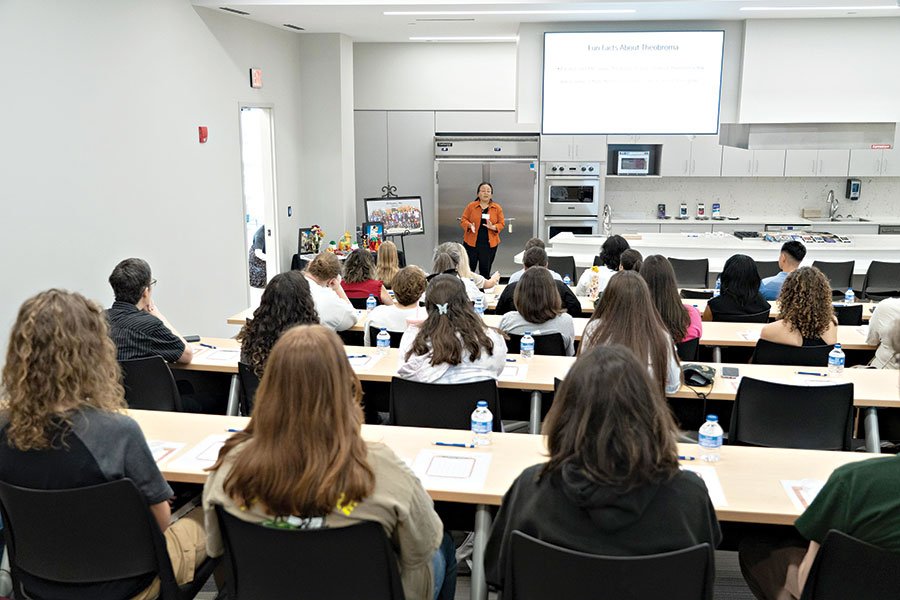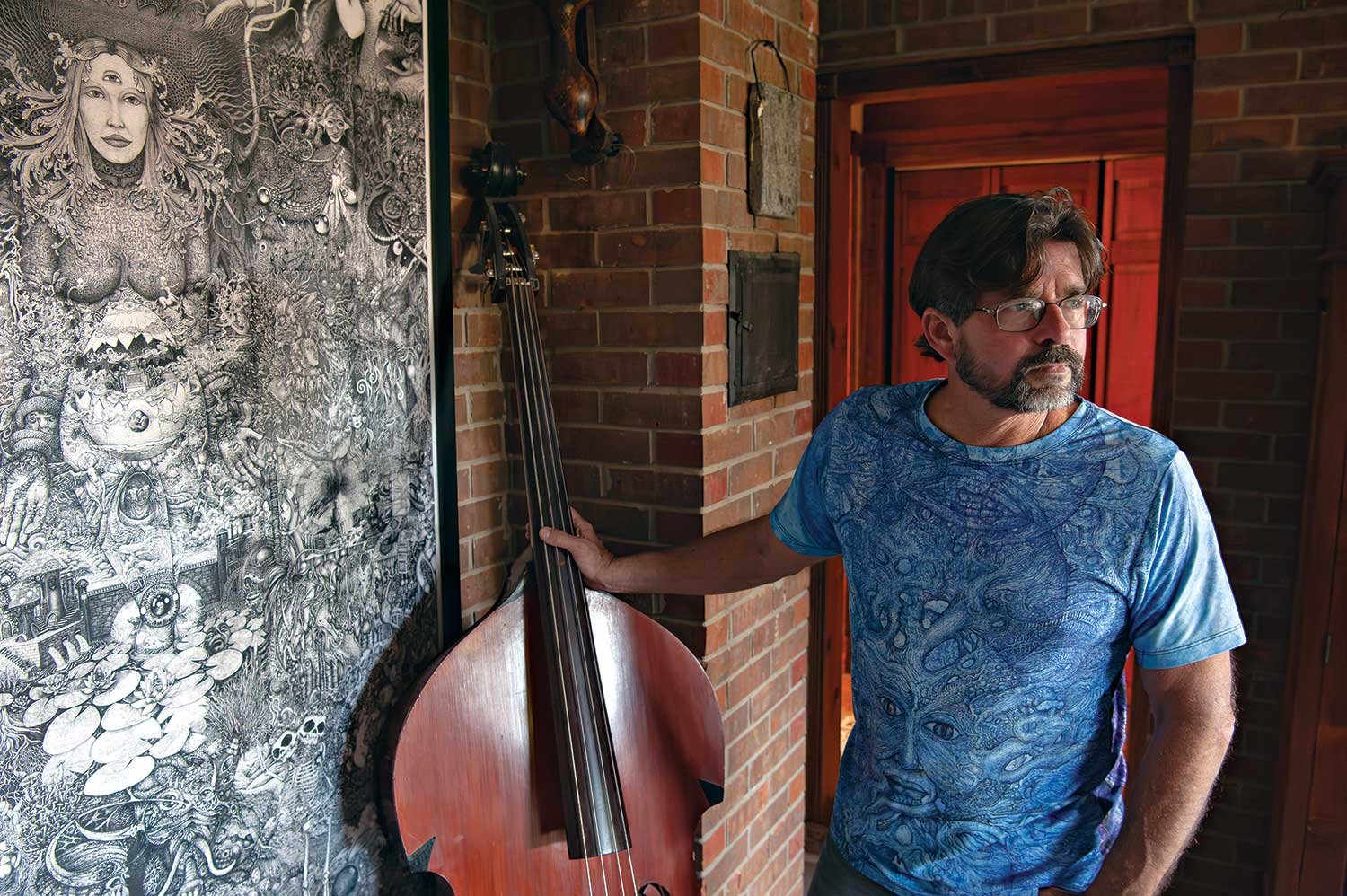MUW's culinary program: Setting the table for success

“Experience is the best teacher.”
“Move in the direction of your dreams.”
These fortunes weren’t the kind third- and fourth-year W culinary students found when they cracked open their fortune cookies this semester in their World Cuisine class, although they certainly applied.
Instead, what the students found printed on slips of paper inside each cookie was a region of the world. “Italy,” one said. “France,” read another.
The fortunes were class assignments: Each small group was charged with the challenge of both teaching classmates about their assigned region and selecting and demonstrating three dishes from it, said Chef Instructor Mary Helen Hawkins.
The fortune cookies came at the end of a meal prepared by W alum Nichole Cancellare, Hawkins said, a meal featuring traditional Japanese dishes. After learning about the culture and traditions of the region and watching Cancellare demonstrate techniques common to the region, students ate their meal together and discussed the details of its preparation. They perched atop tall stools surrounding a table centered in one of the two expansive prep kitchens housed in the new Culinary Arts building.
It’s the kind of learning and teaching that has been more than a decade in the works.
Setting the table
Today, entering the new $18 million Culinary Arts building on the campus of The W feels a bit like stepping into the foyer of a beautiful old home, albeit one with state-of-the-art furnishings and technology – not to mention 50,000 square feet.
“This is our grand Southern staircase,” Culinary Arts Institute Director Tracee Watkins laughed as she climbed the open staircase leading from the foyer to the office space above.
The staircase isn’t the only thing grand about the new building, which opened to students this fall semester. It boasts two prep kitchens, each of which include expansive work stations, eight commercial ranges, a fryer, and a pasta cooker. In addition to these, the building offers both traditional and modular classrooms, a locker room for culinary arts students, a dining space that seats 100, walk-in refrigerators and freezers, a loading dock for fresh ingredients, and its own laundry facilities.
The school’s new Culinary Arts building
But one of its most-beloved features is a tiered demonstration kitchen.
“In our [former demonstration] kitchen in Shattuck [Hall], only about 20 students could watch the process, and only a few of those really could see up close,” remembered Chef Hawkins. “Now, the new kitchen seats 100, and all of them can see close-ups of what’s going on.”
The increased visibility of the demonstration comes courtesy of three large television screens, two mounted at the front of the room and one at the back. A collection of cameras allows students sitting on the top tier of the auditorium to view the food preparation just as well as those sitting on the front row.
“Some cameras focus in on the food preparation spaces and some on the entire kitchen,” said Watkins. “Chefs can control which cameras to use depending on what they need to show.”
After viewing a demonstration, students frequently put into practice what they have seen in labs, using one of the two prep kitchens or the baking kitchen.
“The bakery is completely self-contained,” Watkins said.
A fryer and refrigerator in the bakery supplement walk-in refrigerators and freezers located in the hallway. Spanning one wall are two commercial wall ovens with warming drawers in addition to three ovens that reach temperatures high enough for pizza and other specialty items.
To prep all that dough, a commercial stand mixer sits in one corner, a dough hook centered inside a bowl with a rim the circumference of a hula-hoop.
“It even has its own dish pit,” Watkins said. “There’s no reason to leave.”
Visible through a glass wall in the bakery sits the chocolate room. The room is temperature- and humidity-controlled for chocolate work but does not yet have the tools necessary for it.
“It all comes down to being good stewards of the state’s money,” Watkins said. “We realized we couldn’t afford the equipment, but we have a space ready for it when a donor arrives.”
Preparing the meal
These new spaces continue the mission that began in 1996 when The W became the first culinary arts program in Mississippi. The program remains the only one like it in the state.
Columbus native Rachel Harris says the program makes possible one of her lifelong dreams.
“My mom found a journal I had when I was in first grade,” she remembered. “In it, I’d written I wanted to be either a pilot or a chef. By the next year, I’d written only ‘chef’ as an option.”
Harris already has five years of catering experience and her own cake-making side hustle she named Rae-Rae’s Apron.
“In January of 2021, I opened an Instagram page and posted photos of a bunch of baked goods I’d made,” she said. “Then I posted videos showing how to do things. Now, I don’t do videos, but I post photos of finished cakes I’ve made for customers.”
The culinary program at The W made it possible for Harris to stay close to home but also pursue her degree. She also kept working for Harding Catering throughout college, a job she started as an internship through Lowndes Young Leaders while she was still a student at Caledonia High.
“I went to the demonstration kitchen in Shattuck and watched Chef Hawkins demonstrate [to Young Leaders] how much sugar is in different drinks,” she said. “A few years later, I took a class from Chef Hawkins, and I sat in that same seat.”
Harris will graduate with her B.S. in culinary arts in December, making her the first member of her family to earn a college degree.
Inviting the guests
As students and staff alike settle into the new building, they look forward to hosting guests in the new space, as they did in Shattuck before.
“We are working toward having community events next spring,” Watkins said. “We want our guests to be proud of what they see when they come here.”
September’s Town & Tower event – a quarterly meeting of MUW stakeholders – was held in the building so community members could see the facilities. That event was catered, as staff members are “working the kinks out of a very complex facility,” said Watkins.
Students and members of the public attend a Hispanic Heritage Month event at the school in September.
In early October, the facility played host to an interdisciplinary group of students who presented information about chocolate as part of a campus-wide celebration of Hispanic Heritage Month. Hawkins prepared chocolate tasting mats featuring chocolates with six different concentrations of cacao. Culinary arts student Erik Vazquez-Diaz presented each type of chocolate and its cacao percentage, Hawkins said.
Up next is a celebration of the 50th anniversary of The W’s nursing program scheduled for November. For that event, Chef Hawkins and her students will provide desserts for more than 100 guests.
“They are in the recipe testing and planning stages now,” said Watkins. “We have seats for 100 in our events space, so our guests may spill out into the hallways as well.”
And, of course, Watkins and other institute staff members continue to seek students who would thrive in the program.
Culinary Arts Institute Director Dr. Tracee Watkins stands in one of the school’s new instruction rooms.
“We are the only 4-year culinary arts degree in the state, but we get a lot of students from other states because the W does not charge out-of-state tuition,” Watkins said.
“We believe in a high quality, low cost education…and that doesn’t stop at a state line.”
Top photo: Chef Instructor Mary Helen Hawkins stands in the Culinary Institute’s demonstration kitchen.
STORY BY AMELIA PLAIR
HISPANIC HERITAGE MONTH PHOTO BY CHRIS JENKINS
ALL OTHER PHOTOS BY RORY DOYLE







